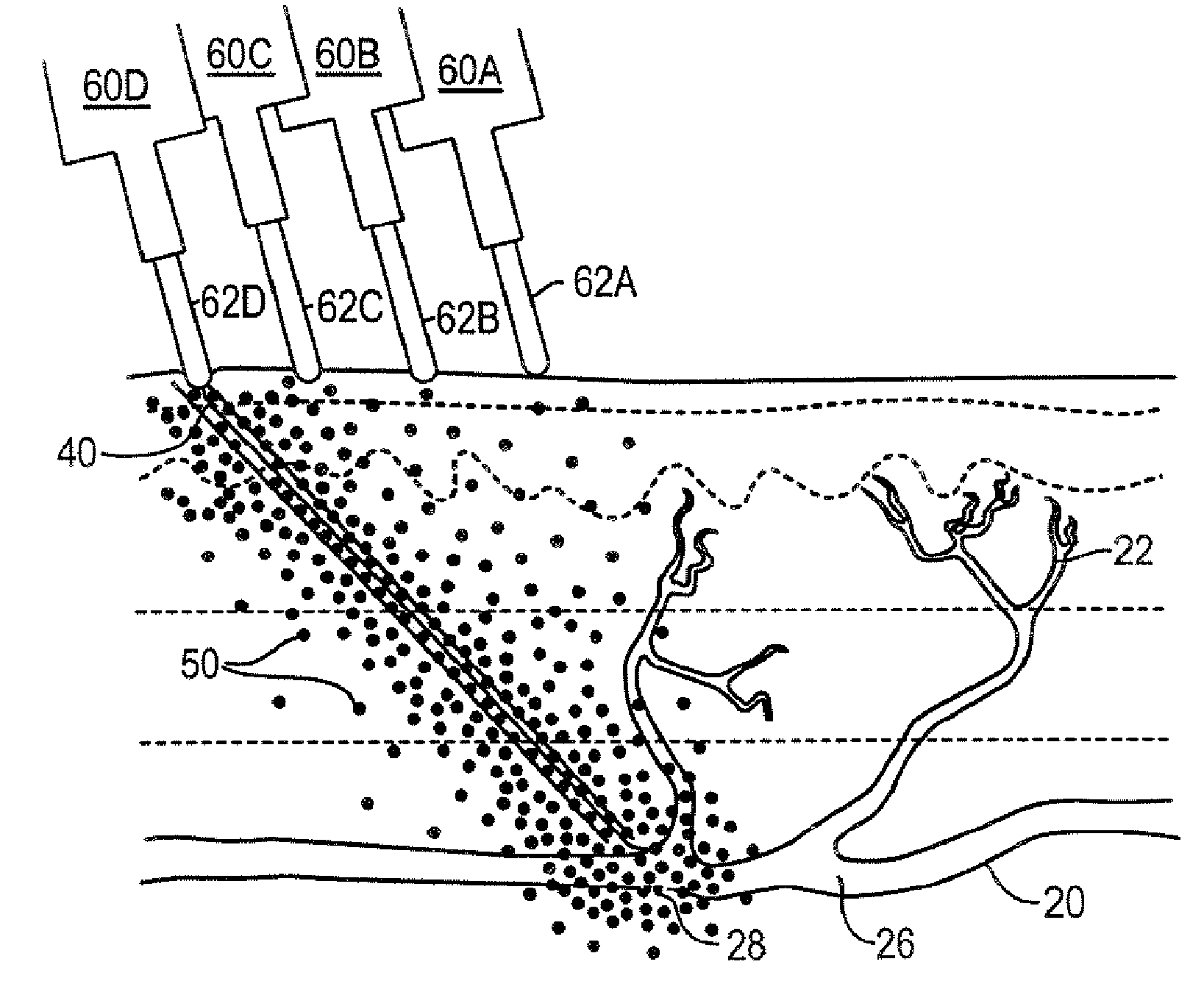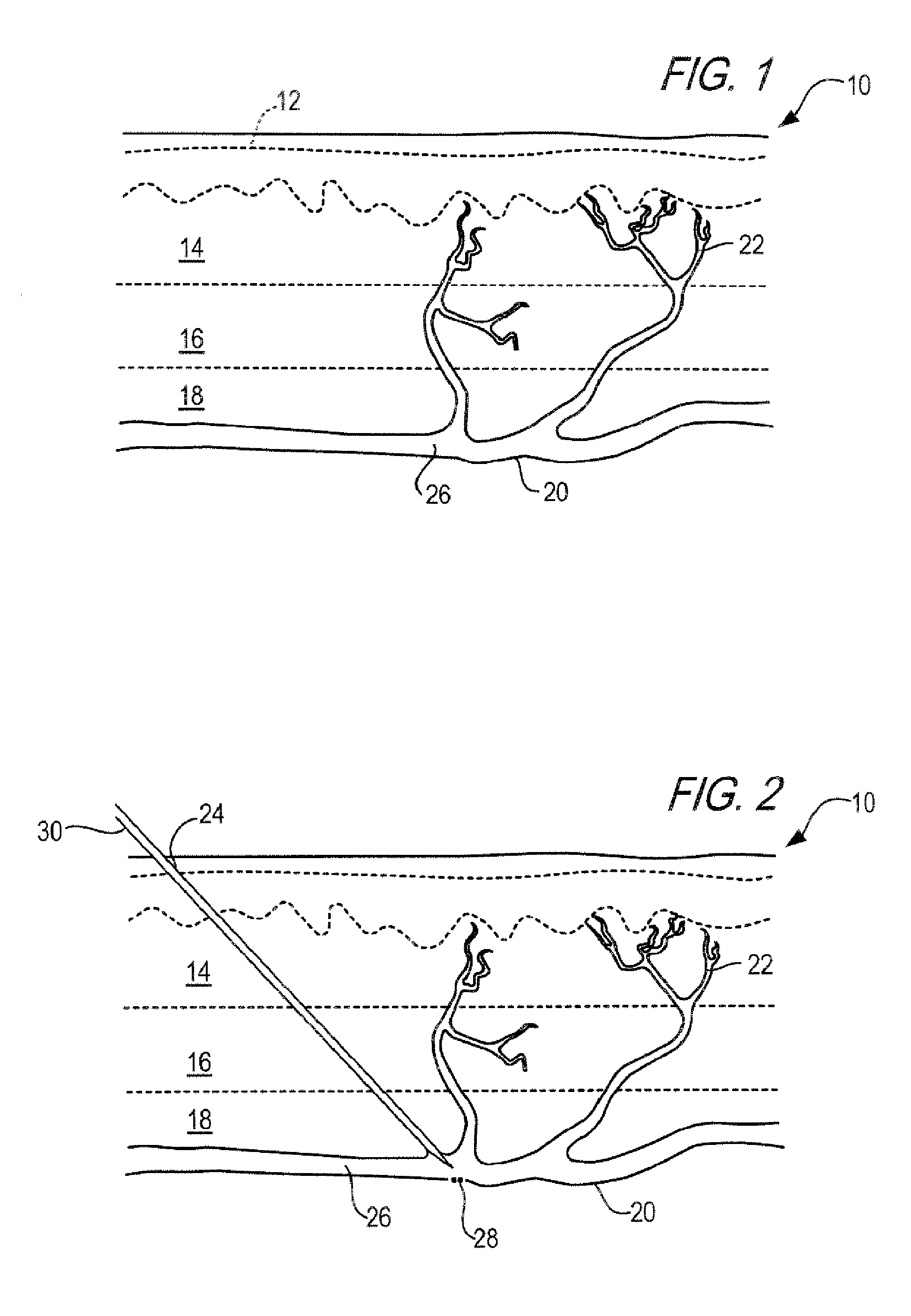Cosmetic method and kit for treatment of spider veins and other superficial venous pathology
a cosmetic method and kit technology, applied in the field of cosmetic methods and kits for treating spider veins and other superficial vein pathologies, can solve the problems of rarely achieving the results obtained with sclerotherapy, high cost, and high cost, and achieve the effect of reducing unwanted side effects with minimal trauma to the patien
- Summary
- Abstract
- Description
- Claims
- Application Information
AI Technical Summary
Benefits of technology
Problems solved by technology
Method used
Image
Examples
example
Actual Treatment of Patient
[0105] When all main trunk pathology has been treated by the appropriate technique, as well as all dependant, large reticular and perforator veins feeding a particular area of superficial venous pathology have been treated by sclerotherapy or other methods (mini-phlebectomy), the methods of the invention may be performed.
[0106] Sclerotherapy of the area of superficial venous pathology is performed in the usual manner: To treat reticular and feeder veins Sotradecol solution 0.3% is drawn in a 3 cc Becton Dickinson (BD) syringe. Using a 27-G-1 / 2 BD needle, sequential injections of 0.2-0.5 cc of the solution are injected along the length of the veins every 0.5-2 cm. To perform sclerotherapy of the telangiectatic veins, 0.1% Sotradecal, 0.3% Polydecanol, or 70% glycerin and lidocaine solution is drawn into a 3 cc BD syringe. Using a 30-G-1 / 2 BD needle sequential injections of 0.1-0.4 cc of solution are made every 0.2-0.5 cm along the length of the telangiect...
PUM
 Login to View More
Login to View More Abstract
Description
Claims
Application Information
 Login to View More
Login to View More - R&D
- Intellectual Property
- Life Sciences
- Materials
- Tech Scout
- Unparalleled Data Quality
- Higher Quality Content
- 60% Fewer Hallucinations
Browse by: Latest US Patents, China's latest patents, Technical Efficacy Thesaurus, Application Domain, Technology Topic, Popular Technical Reports.
© 2025 PatSnap. All rights reserved.Legal|Privacy policy|Modern Slavery Act Transparency Statement|Sitemap|About US| Contact US: help@patsnap.com



